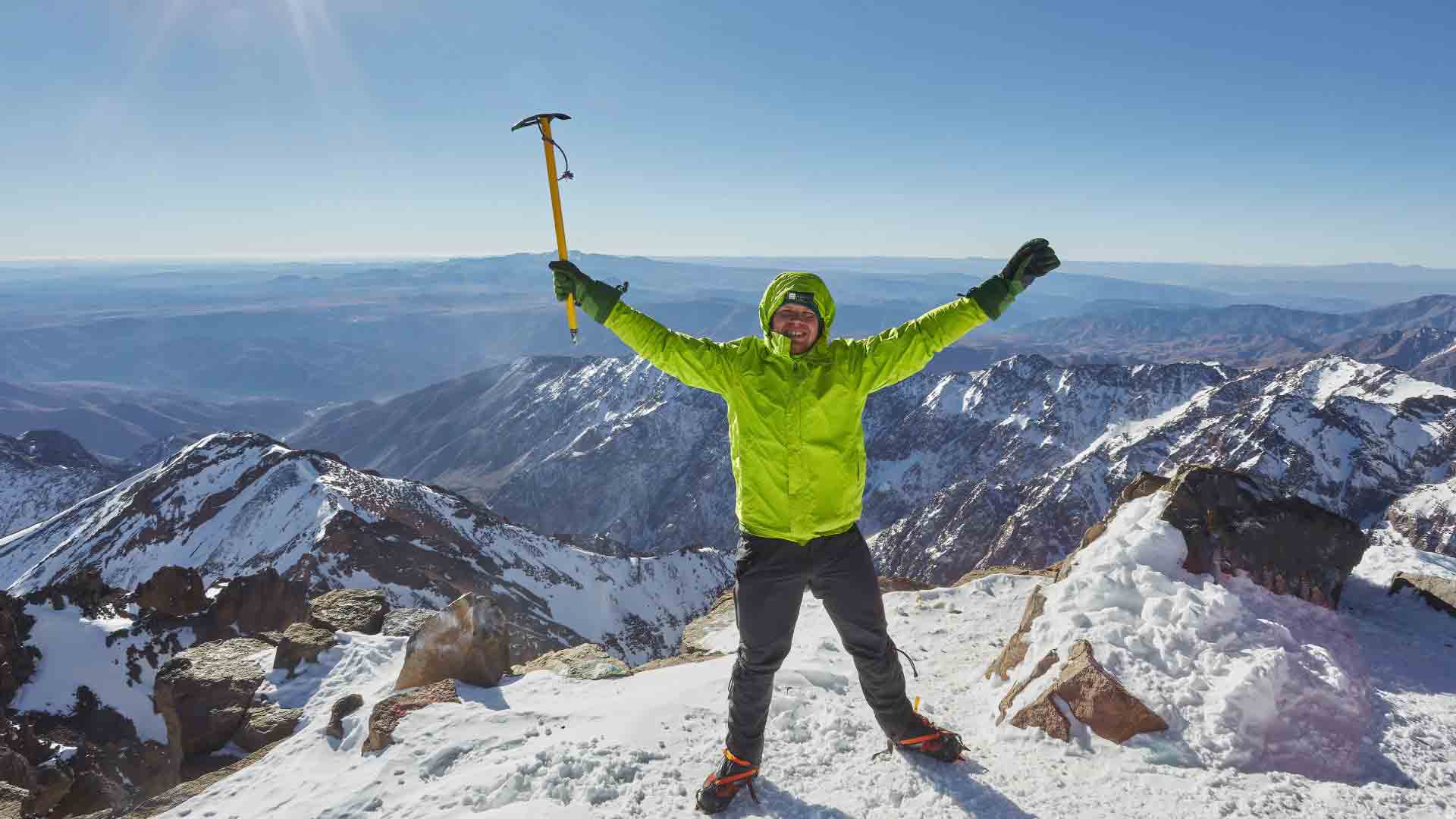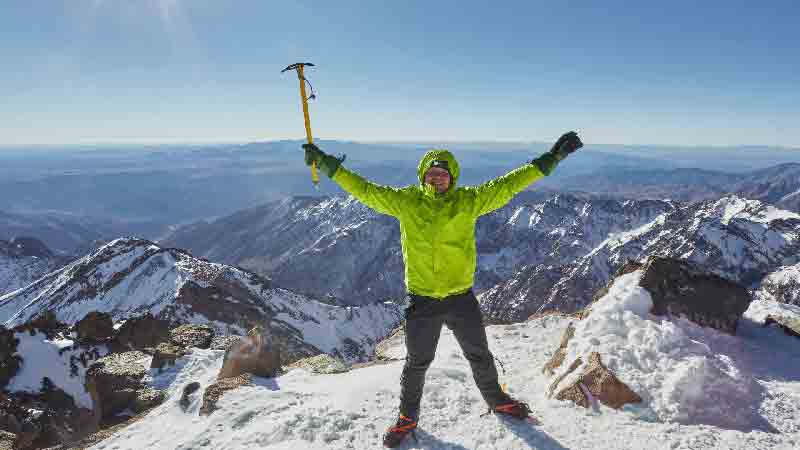

Winter Ascent of Mount Toubkal – Essential Tips & Gear
Mount Toubkal, standing at 4,167m, is the highest peak in North Africa and a true challenge for adventurers, especially in winter. For our Spartans at Hiking in London Club, this is an unforgettable 3-day experience blending snow-covered landscapes, Berber hospitality, and high-altitude achievement.
3-Day Itinerary
- Day 1 – Imlil Village (1,800m): Arrival at Imlil, a picturesque Berber village. Acclimatization walk and gear check. Overnight in a local guesthouse.
- Day 2 – Refuge des Mouflons (3,207m): Hike through Aroumd and Sidi Chamharouch. Snow likely from 2,500m upward. Overnight at the refuge. Temperature can drop below -10°C.
- Day 3 – Summit & Return: Early alpine start (around 5 AM). Steep, icy ascent via the south col. Crampons and ice axe essential. Return to Imlil by afternoon.
Clothing and Gear Checklist
- Boots: Waterproof, insulated mountaineering boots (B2 or B3 rating).
- Outer Layers: Down jacket, hardshell jacket and pants, waterproof gloves, hat, buff or balaclava.
- Mid Layers: Fleece or synthetic insulation + merino wool base layers.
- Crampons: Strap-on or semi-automatic compatible with your boots.
- Ice Axe: Lightweight walking axe for self-arrest and balance.
- Other Essentials: Sunglasses, headlamp with spare batteries, 2L water bottles (insulated), high-calorie snacks, personal first aid kit, sleeping bag rated to -10°C (if not provided by the refuge).
Terrain and Conditions
The route involves a steady incline with steep, icy switchbacks. In winter, snow covers most of the trail from around 2,800m. Summit day requires full winter gear and good physical condition. Avalanche risk is low but possible after recent snowstorms — always follow your guide’s advice.
Pro Tips for a Successful Ascent
- Train with hills: Prepare with hikes in snow or steep terrain before the trip.
- Pack light but warm: Every extra kilo matters on summit day.
- Acclimatize: Avoid rushing the climb. Sleep high, hike slow.
- Use trekking poles: Especially useful in snow or on descents.
When It’s Not Viable
Sometimes, extreme weather (heavy snow, wind above 60 km/h, or avalanche risk) makes the summit attempt unsafe. In such cases, the decision to turn back lies with your certified mountain guide – safety comes first.
Are you ready, Spartans? This is a real alpine adventure – cold, tough, and absolutely epic. Stay tuned, the winter Toubkal is coming soon!
January and February (Deep Winter)
Highest chances of deep snow and sub-zero temperatures.
Fully alpine terrain: crampons, ice axe, and prior experience required.
Good acclimatization and physical fitness are essential.


